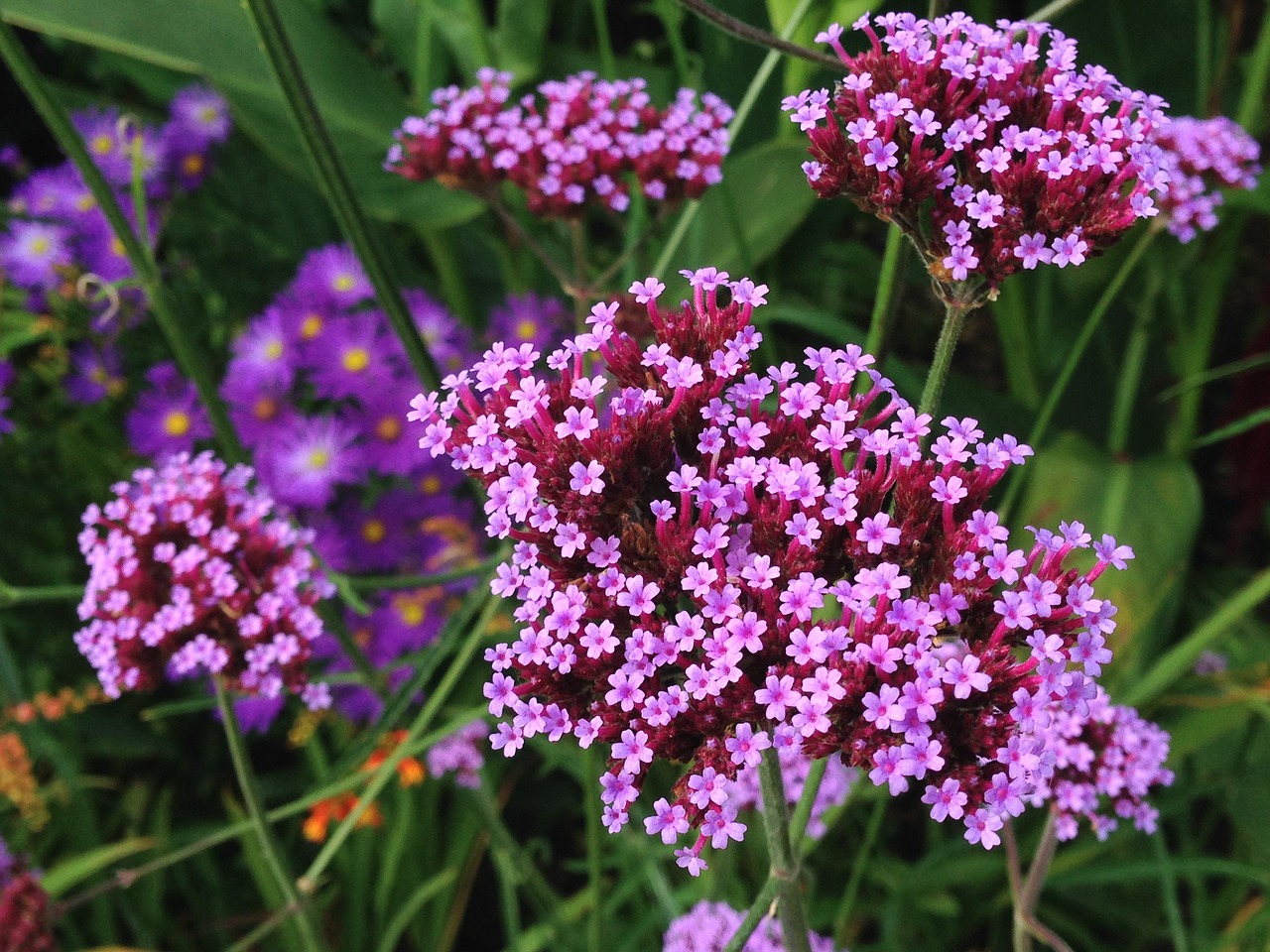
Verbena, with its clusters of vibrant blooms in shades of pink, purple, red, and white, is a gardener’s delight. These low-maintenance flowers add a cheerful touch to borders, containers, and hanging baskets, attracting butterflies and hummingbirds with their sweet nectar. But how do you unlock the secret to a verbena garden that explodes with color all season long?
This guide equips you with everything you need to cultivate a thriving verbena haven. From selecting the perfect variety to providing the right care, we’ll walk you through the process, ensuring your verbena puts on a nonstop floral display that will be the envy of the neighborhood.
Unveiling the Verbena Charm
Verbena comes in two main varieties: annual verbena (Verbena hybrida) and perennial verbena (Verbena bonariensis).

Annual verbena, a popular choice for containers and bedding displays, thrives in hot weather and blooms profusely from spring to frost.

Perennial verbena, on the other hand, is a hardier option that returns year after year, boasting tall flower spikes that add a touch of elegance to borders.
Choosing Your Verbena Champion
When selecting your verbena, consider the following factors:
- Sun Exposure: Most verbena varieties prefer full sun, receiving at least 6-8 hours of direct sunlight daily. However, some trailing varieties tolerate partial shade.
- Color Preference: Verbena boasts a vibrant color palette. Do you crave a fiery burst of red? Perhaps a calming sea of lavender? Choose the colors that resonate with your garden’s overall design.
- Garden Style: Trailing verbenas are ideal for hanging baskets and window boxes, cascading down in a beautiful display. Upright verbenas work wonders in borders and containers, adding pops of color.
Planting Power
Once you’ve chosen your verbena champion, it’s time to prepare for planting:
- Timing is Key: Plant your verbena after the danger of frost has passed and the soil has warmed up. In most regions, this falls between mid-spring and early summer.
- Soil Preparation: Verbena thrives in well-draining soil. Amend your planting area with compost or organic matter to improve drainage if needed.
- Spacing it Out: Refer to the specific spacing recommendations on your verbena plant label. Generally, space annual verbena 10-12 inches apart and perennial verbena 18-24 inches apart.
Planting Pointers
- Gently remove the verbena plant from its pot, loosening any root-bound structures.
- Dig a hole slightly larger than the root ball.
- Place the plant in the hole and fill the surrounding area with soil, ensuring the plant sits at the same level it was in the pot.
- Water the plant thoroughly to settle the soil.
Nurturing Your Verbena Oasis
Now that your verbena is nestled in its new home, it’s time to provide the care it needs to flourish:
- Watering Wisely: Verbena is moderately drought-tolerant, but it performs best with consistent moisture. Water deeply when the top inch of soil feels dry to the touch. Avoid overwatering, which can lead to root rot.
- Feeding Frenzy: During the growing season, feed your verbena with a balanced fertilizer every 4-6 weeks. Opt for a water-soluble fertilizer diluted according to the package instructions.
- The Power of Pruning: Regular deadheading (pinching off spent flowers) encourages continuous blooming throughout the season. Deadheading also prevents the plant from setting seed, directing its energy toward producing more flowers.
Bonus Tip: Pinching for Perfection
For bushier, fuller plants, pinch off the growing tips of your verbena when they reach a few inches tall. This encourages branching, resulting in a more compact and floriferous plant.
Conquering Common Concerns
While verbena is a relatively low-maintenance plant, there are a few potential challenges to watch out for:
- Powdery Mildew: This fungal disease appears as white powdery spots on leaves. Improve air circulation around your plants and water at the base rather than overhead to prevent powdery mildew.
- Aphids: These tiny, sap-sucking insects can damage your verbena. Neem oil spray or insecticidal soap are effective solutions for aphid control.
- Slugs and Snails: These slimy creatures munch on leaves. Scatter diatomaceous earth around your plants or use a natural slug and snail bait to deter them.
Early Intervention is Key
If you notice any signs of pests or diseases, act promptly. Early intervention can prevent the spread of the problem and ensure your verbena stays healthy.
The Verbena Victory Lap
By following these simple steps, you’ll be well on your way to cultivating a verbena paradise that bursts with color throughout the season. Remember, these vibrant flowers thrive on neglect – well, almost! With consistent watering, occasional feeding, and regular deadheading, your verbena will reward you with a nonstop floral display that will bring life and joy to your garden.
Beyond the Bloom
Verbena isn’t just a visual treat; it also attracts beneficial insects like butterflies and hummingbirds. These pollinators flit from flower to flower, helping to ensure a healthy ecosystem in your garden. Additionally, verbena’s vibrant colors and long bloom time make it a fantastic choice for cutting gardens. Clip a few stems and bring a touch of verbena magic indoors to brighten up your living space.
Winter Considerations (For Annual Verbena)
While annual verbena won’t survive frost, you can enjoy its beauty for another season by starting seeds indoors about 6-8 weeks before the last frost date. This way, you’ll have fresh young plants ready to transplant outdoors once the weather warms up.
For perennial verbena, simply cut back the dead foliage in late fall or early spring before new growth emerges. This encourages a bushier and more vibrant plant come springtime.
With a little care and attention, your verbena garden will become a showstopper, a symphony of color that transforms your outdoor space into a haven of beauty and life. So, get planting, embrace the joy of verbena, and witness the magic of these non-stop blooming wonders unfold in your garden!
